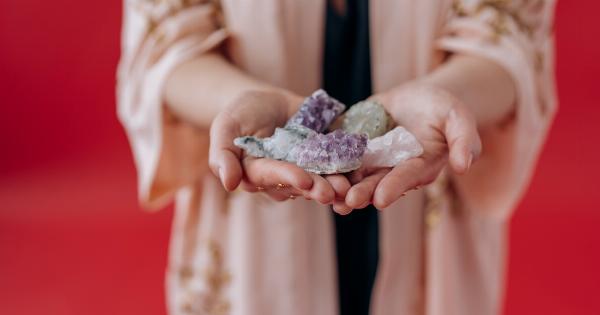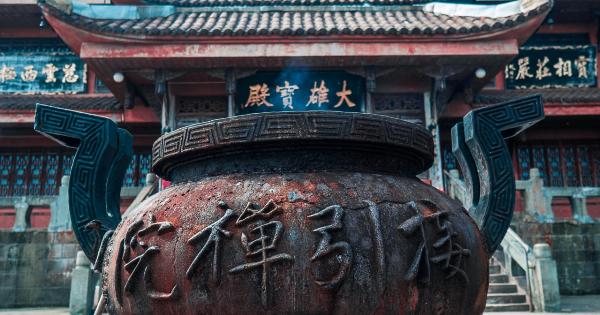Pulse feeling, also known as pulse diagnosis, is a traditional diagnostic technique used in many forms of alternative medicine, including Traditional Chinese Medicine (TCM), Ayurveda, and Japanese Kampo medicine.
This method involves feeling the pulse at various locations on the body to assess the overall health and balance of a person.
The Origins of Pulse Feeling
The origins of pulse feeling can be traced back thousands of years to ancient civilizations. In China, pulse diagnosis has been practiced since the early Shang Dynasty (circa 1600 BCE).
Ancient texts such as the “Huangdi Neijing” (Yellow Emperor’s Inner Canon) mention pulse feeling as an important diagnostic tool.
In Ayurveda, an ancient Indian system of medicine, pulse feeling is considered one of the “eight limbs” of diagnosis.
The classical Ayurvedic text, the “Charaka Samhita,” describes various pulse qualities and their significance in assessing the body’s dosha balance.
In Japan, pulse feeling is an integral part of Kampo medicine, which is based on traditional Chinese medicine. Kampo practitioners utilize pulse diagnosis as a means to evaluate imbalances in the body’s Qi or vital energy.
The Technique of Pulse Feeling
The technique of pulse feeling involves gently placing three fingers (typically the index, middle, and ring fingers) on different pulse points on the body. In TCM, these pulse points are located mainly on the radial artery of the wrist.
Each pulse point corresponds to specific organs and meridians in the body. By analyzing the qualities of the pulse at each point, practitioners can gather valuable information about a person’s health.
Understanding Pulse Qualities
Pulse feeling practitioners assess various qualities of the pulse, including the rate, rhythm, strength, depth, width, and overall quality. Each of these factors provides vital clues about the condition of different organs and systems in the body.
Interpreting Pulse Feeling in Traditional Chinese Medicine
In TCM, each pulse position corresponds to a specific organ and meridian. For example, the pulse at the Cun position (located near the index finger) reflects the overall condition of the Lung and Large Intestine meridians.
By carefully observing the pulse qualities at various positions, TCM practitioners can detect imbalances in the corresponding organs.
Applying Pulse Feeling in Ayurveda
In Ayurveda, pulse feeling involves assessing the three doshas: Vata, Pitta, and Kapha. Each dosha has specific qualities, and through pulse diagnosis, Ayurvedic practitioners can determine which dosha is out of balance in a person.
This information guides the selection of appropriate therapies and lifestyle recommendations to restore balance and promote health.
Pulse Feeling as a Diagnostic Tool in Kampo Medicine
In Kampo medicine, pulse diagnosis is used to assess the condition of Qi or vital energy. The pulse’s qualities can indicate if Qi is excessive, deficient, or stagnant in specific meridians and organs.
Kampo practitioners use this information to formulate individualized herbal prescriptions to restore Qi balance.
The Role of Technology in Pulse Feeling
Advancements in technology have introduced various devices that claim to measure the pulse electronically.
However, traditional practitioners emphasize the importance of tactile examination and consider the subtleties felt through pulse feeling to be irreplaceable. The nuances of pulse qualities can be easily missed or misinterpreted using electronic devices.
The Holistic View of Health in Pulse Feeling
Pulse feeling offers a holistic approach to health assessment by considering the interconnectedness of different body systems.
Rather than focusing solely on symptoms, pulse diagnosis aims to identify underlying imbalances and restore harmony within the body. This comprehensive understanding of an individual’s health can lead to more effective treatment strategies.
The Benefits and Limitations of Pulse Feeling
Pulse feeling has several advantages as a diagnostic tool. It is non-invasive, cost-effective, and provides immediate feedback. Additionally, pulse feeling allows practitioners to monitor changes over time and track the progress of treatments.
However, pulse feeling does have some limitations. It requires a well-trained practitioner with a deep understanding of pulse qualities and their significance.
Interpreting pulse qualities accurately can be challenging, as they can vary depending on a person’s age, sex, and overall health condition.
Conclusion
Pulse feeling is a valuable diagnostic technique with ancient roots in various traditional systems of medicine. It is based on the principle that the pulse reflects the overall state of health and balance in the body.
By understanding the origins, techniques, and significance of pulse feeling, we gain insight into its importance as a holistic diagnostic tool.





























